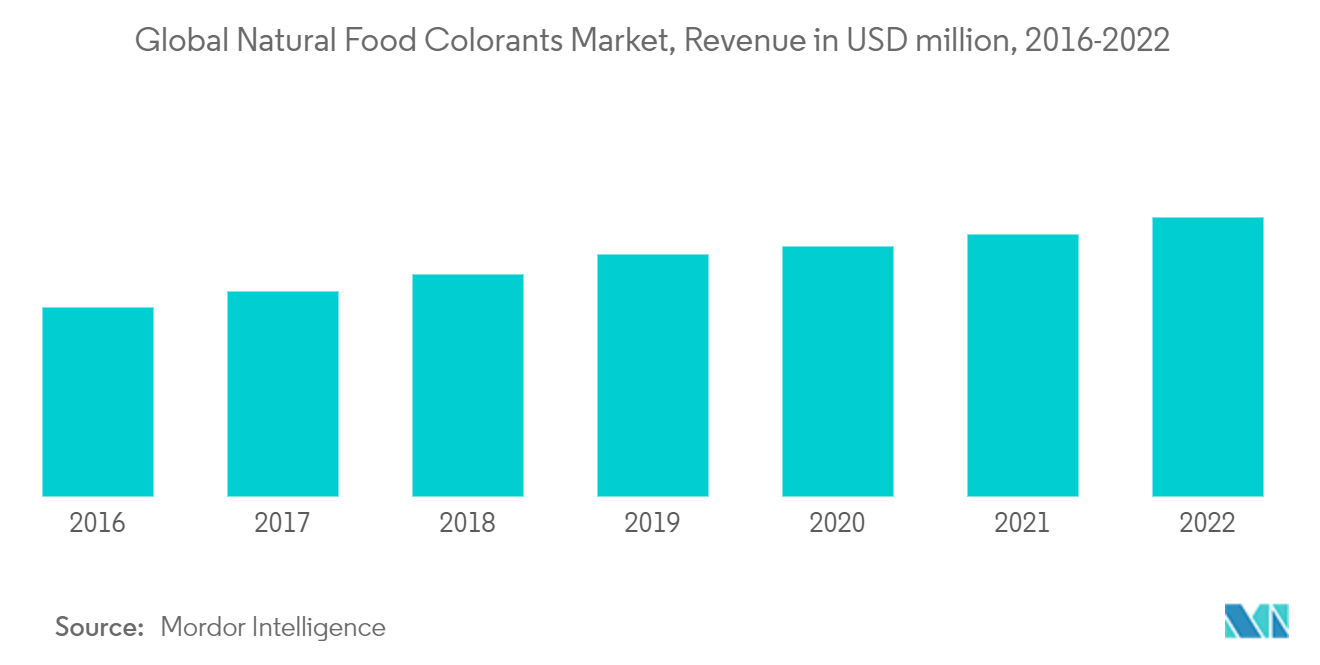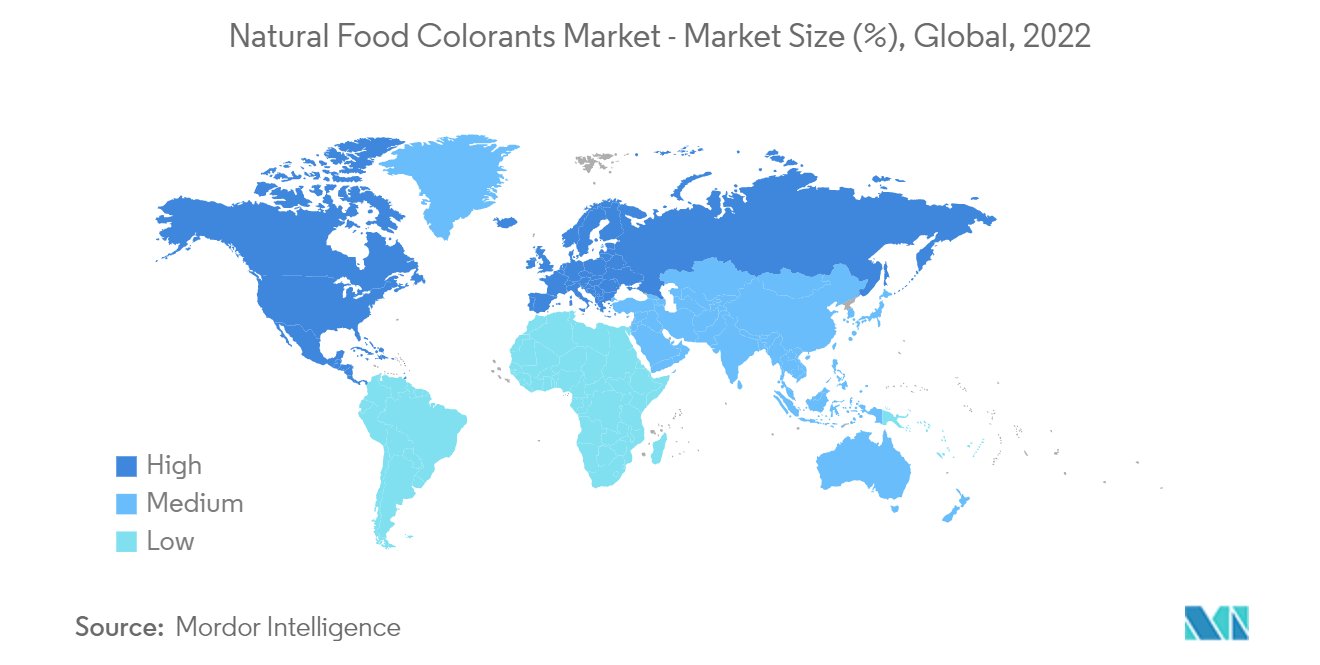Market Trends of Natural Food Colorants Industry
This section covers the major market trends shaping the Natural Food Colorants Market according to our research experts:
Brightening Spotlight on Coloring Foodstuff
Food colors, in the form of coloring foodstuffs, have proven as no less than a revolution for the food industry that is currently being driven by value-added products and ethical consumerism. Consumers redirect their interest toward food products that are not only health-oriented but are ethically sourced, leaving none or least impact on the environment. Moreover, this thrusts the demand for natural food colorants and stresses R&D activities to introduce unprecedented technologies in order to exploit the maximum commercial potential of the market. For instance, in 2019, Naturex introduced Vegebrite® Ultimate Spirulina, a spirulina-based coloring foodstuff that uses a water-based extraction process to ensure a 100% natural solution by delivering clean-label and trehalose-free formulations. It is available in various concentrations and formats.
This changing consumer behavior and market dynamics for food colorants are pushing food manufacturers to quit formulating artificial additives in food products. As a result, major food companies, such as Kellogg's, General Mills, Nestle SA, Campbell, and Kraft, have assured to restrict the use of artificial additives and colorants from their product formulations, portraying promising future for natural colorants, during the forecast period.

Asia-Pacific is the Fastest-growing Region in the Market
The leading natural food colorant manufacturers across the region possess a variety of application technologies, which they can utilize to test the performances of colors in a wide range of food and beverage applications. These include but are not limited to soft drinks, alcoholic drinks, confectionery, frozen desserts, yogurts, baked goods, and processed foods. Natural food colors are used in the Asian food and beverage industry for various reasons. They make food products more visually appealing and emphasize or identify flavors normally associated with various applications. Owing to the wide cultivation of herbs and spices in the region, Asian ingredient companies started developing food coloring additives from various spices like turmeric, red chilies, and hibiscus. They offer multiple tints of yellow, red, pink, and orange colors from the combinations of paprika, curcumin, and hibiscus. These colorants are popular in desserts and beverage applications.
Notably, China represents the largest market in Asia-Pacific as the country accounted for more than 50% share across the APAC market in 2020. The Chinese food colorants market is driven by the advanced usage of naturally derived food colorants making the food appear attractive. A few of the popular natural food colorants used in Chinese food cuisines are carmine, bixin and norbixin, carotenoids, curcumin, anthocyanin, betanin, and phycobilin.


